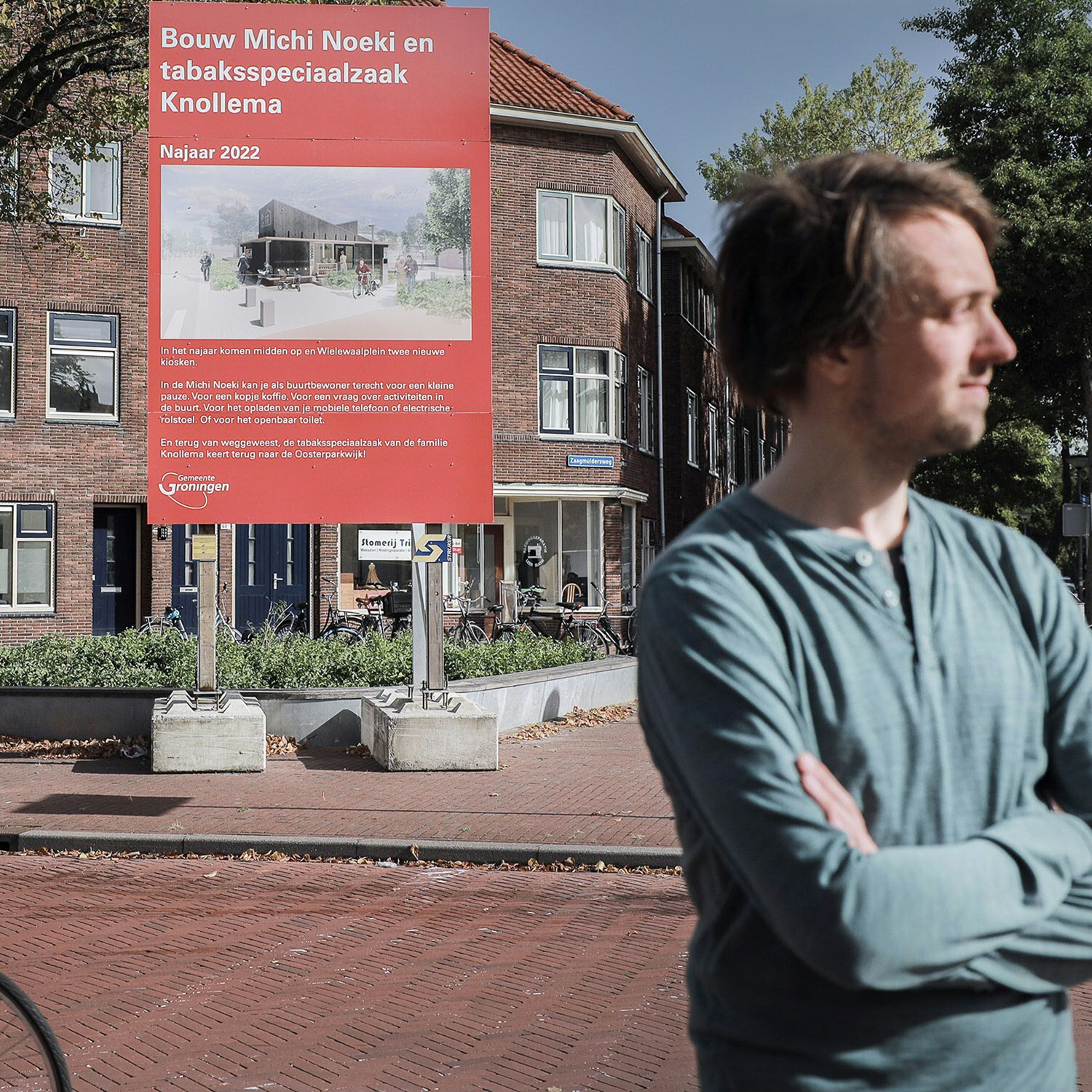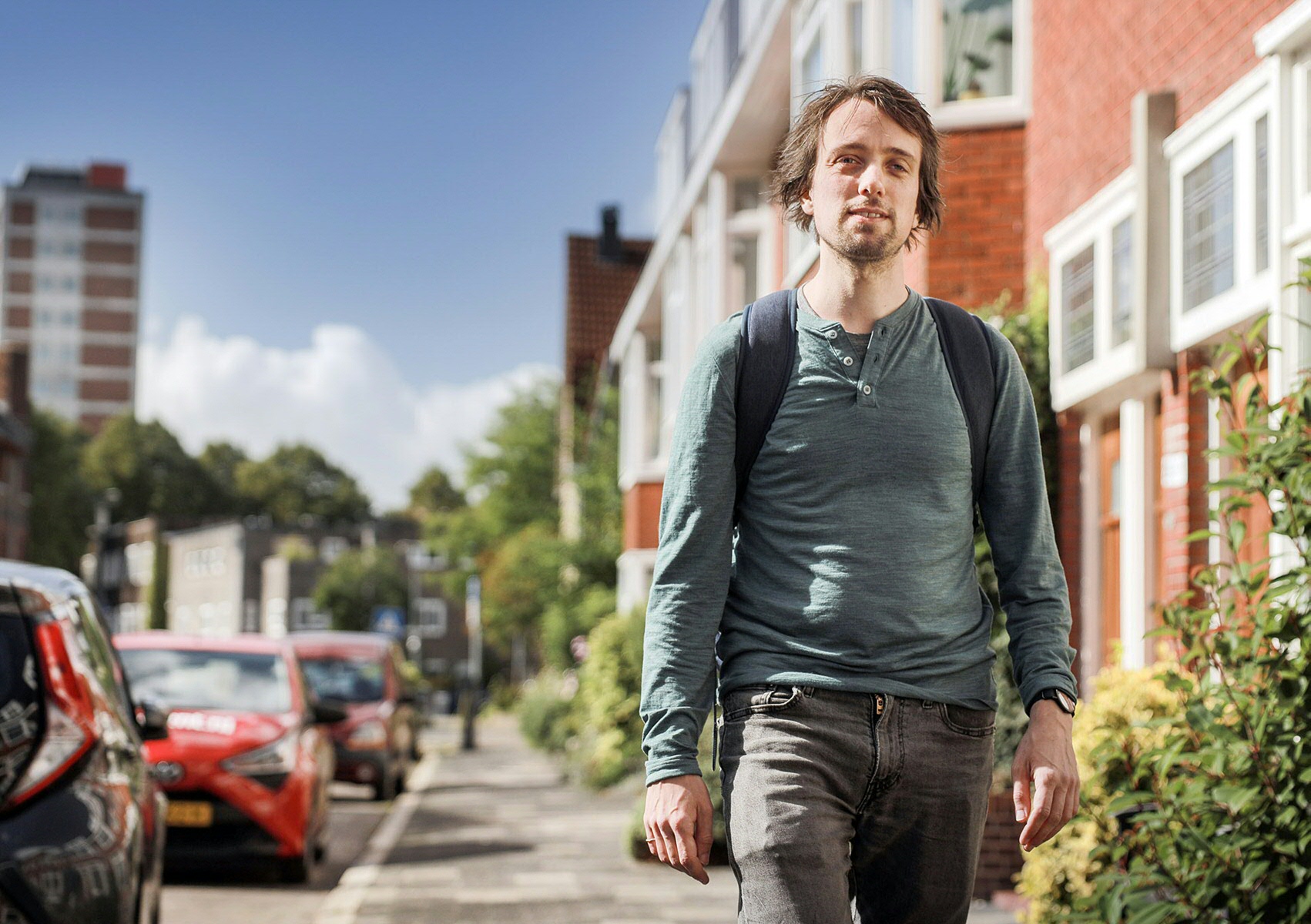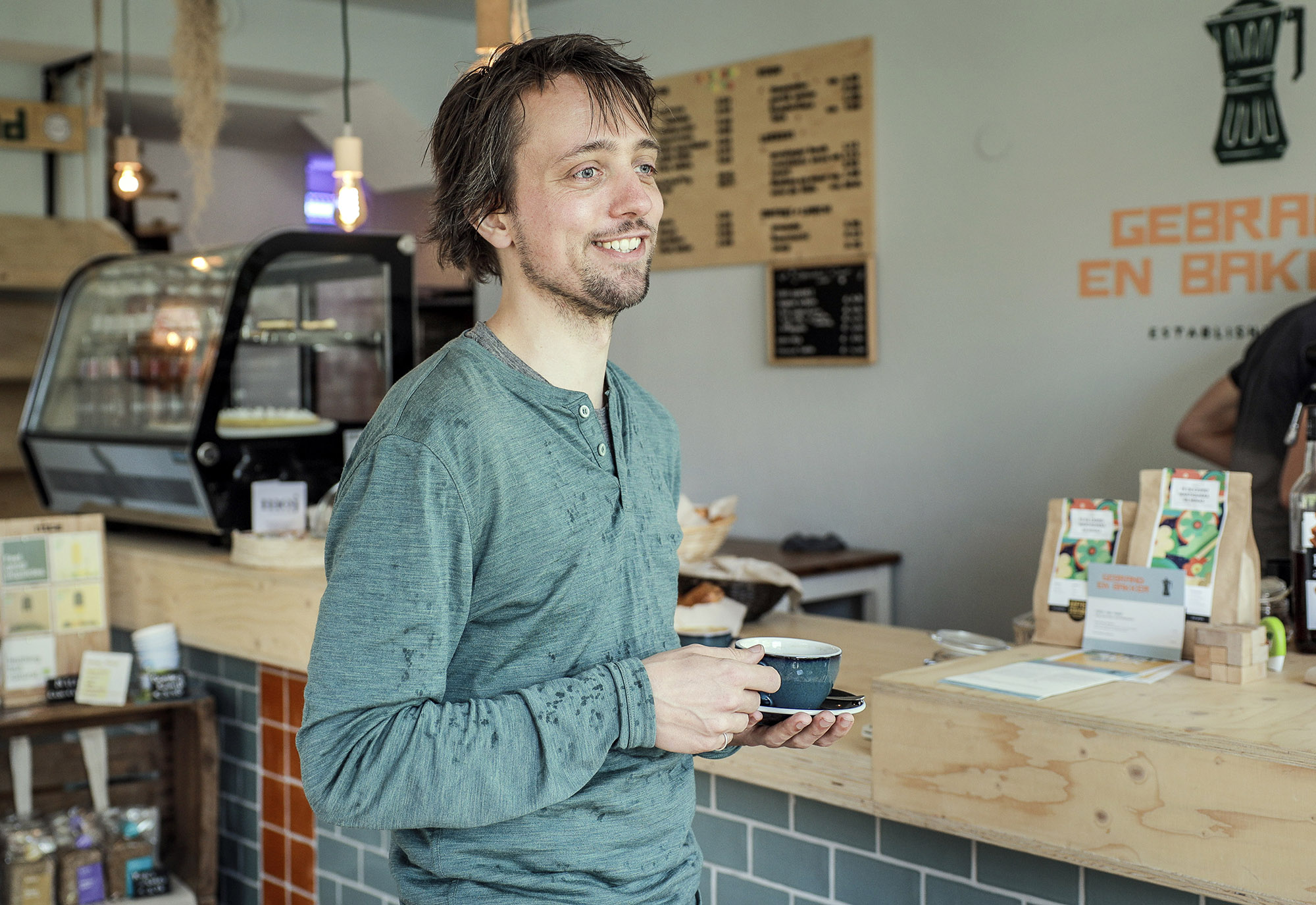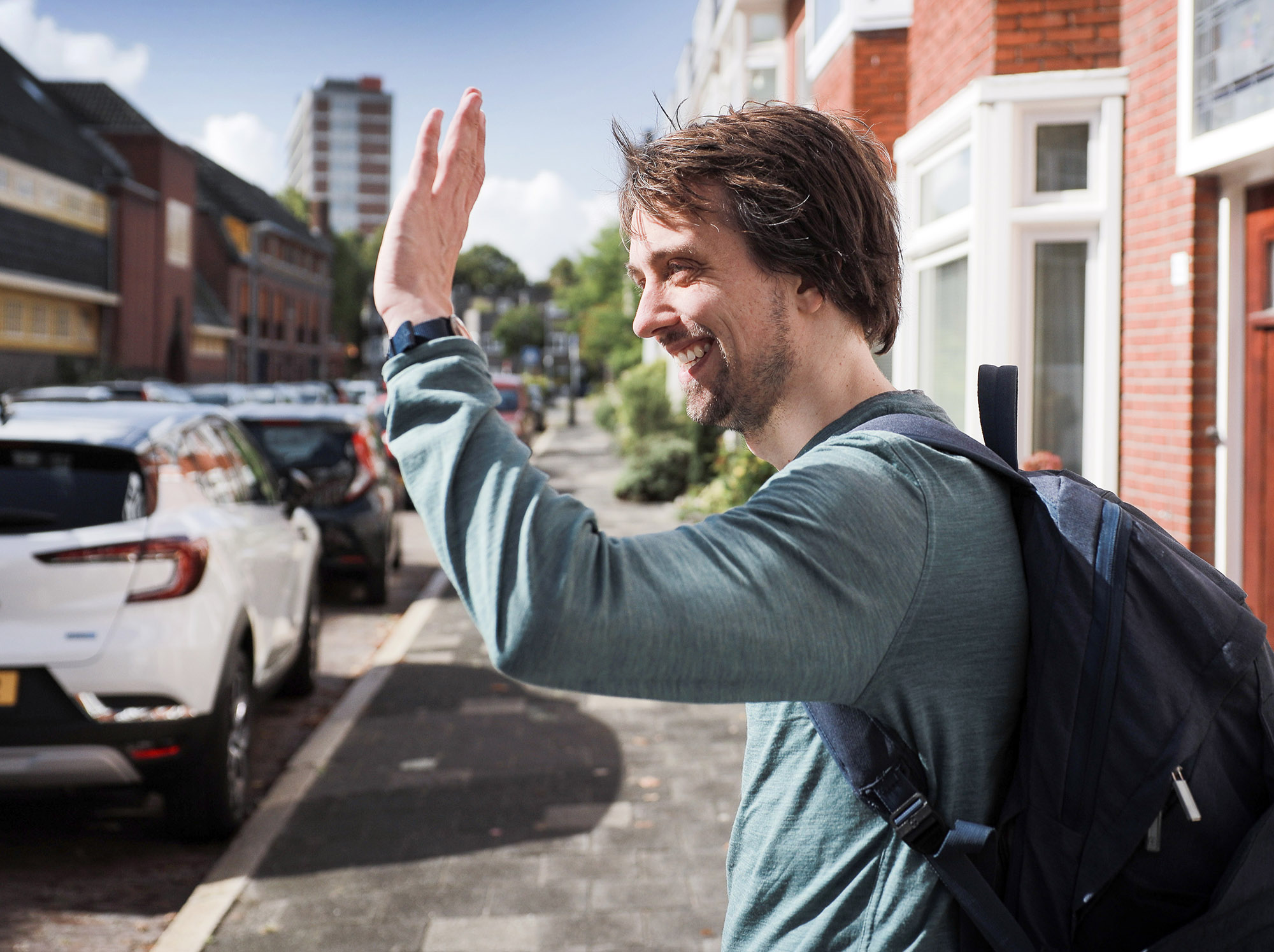How your neighbourhood determines your opportunities
‘This crisis is not too bad’, thought Sander van Lanen back in 2009, while working as an intern at Boomerang. He didn’t realize how bad it was until 2011, when he spoke to protesters on Syntagma Square in Athens. ‘That was the moment when I became interested in the effects of a crisis on various places and various people.’ By now, Van Lanen recognizes the problems of disadvantaged neighbourhoods, but also their strengths.
Text: Marrit Wouda, Communication UG / Photos: Henk Veenstra
His interest in this subject brought him to Ireland, where he conducted research in Cork and Dublin for his PhD thesis. Now, at the University of Groningen, his research focuses on inequality in opportunities, disadvantaged neighbourhoods, and how poverty is passed on within families.
Michi-Noeki
One of the projects that Van Lanen is focusing on is the Michi-Noeki project in the Oosterparkwijk neighbourhood in Groningen. To improve the social framework in this neighbourhood, the Municipality of Groningen has decided to set up four so-called Michi-Noekis. These are small buildings, inspired by the Japanese Michi no eki, a resting place at the side of the road. In the Michi-Noeki, you will find a place to sit down and have a cup of coffee and a conversation, ‘because there is always someone there’, adds Van Lanen. The four small buildings will be set up in strategic locations in the neighbourhood. The aim of this project is to reduce loneliness and encourage participation.

What is a disadvantaged neighbourhood?
But is Oosterparkwijk really a disadvantaged neighbourhood? And what does ‘disadvantaged’ even mean? Policymakers categorize a neighbourhood as disadvantaged when it is has a low score for specific indicators, such as income, labour force participation, and health. Sometimes other indicators are also taken into account, such as the cost of housing, the number of teen mothers, and, in the past, the number of immigrants. ‘But’, says Van Lanen, ‘you should not be too quick to draw conclusions based on this information.’ After all, is a neighbourhood disadvantaged because it has a lot of residents with low incomes, or do these people live in this neighbourhood because they cannot find a place to live anywhere else? ‘We can conclude that there are problems, but we should not conclude that it is the people who are the problem.’ And there are definitely problems in Oosterparkwijk. According to the Municipality of Groningen, relatively few residents have paid jobs, the residents participate less in the administration of their neighbourhood, there is a lot of loneliness, and many residents have health problems.
A lower income because of your neighbourhood
Van Lanen has discovered by now that your opportunities in life are influenced by the place where you live. Research shows that if you live in a neighbourhood with a lower average income, your income will be lower too, even if your parents’ income was above average. In addition, so-called disadvantaged neighbourhoods often carry a stigma. People from other neighbourhoods don’t want to live there and look down on people from this neighbourhood. Young people, in particular, internalize this stigma and think less of themselves. Van Lanen: ‘In Dublin, I spoke to a girl who had quit her studies. Her friends, who were from the same neighbourhood, told her: “Girl, you’re from Ballymun, do you really think you can become a lawyer?” This shows that both an internalized stigma and the lack of certain opportunities in a neighbourhood have far-reaching consequences.’

Distrust
‘One thing that is really beautiful is that you can find very strong networks in neighbourhoods like these’, says Van Lanen. ‘Some people have been living there for generations and their whole life is in this neighbourhood. The advantage of this is that people can fall back on each other.’ But there is also a negative side to this: as an outsider, it is hard to become part of this network. ‘People stick together in their own bubble, which leads to us-vs-them thinking. That those outsiders are not “our kind of people”’, says Van Lanen.
There is not only distrust towards outsiders; many residents also distrust authorities. ‘Many of them depend on social services and benefits, but they have often had bad experiences with these’, adds Van Lanen. They see the authorities as bureaucratic, inflexible, and strict, and this leads to low participation in local decision-making.
From coffee corners to local problems
Will a Michi-Noeki help? Nobody believes that a small building offering cheap coffee will solve all the problems in Oosterparkwijk, but Van Lanen believes it can help. He thinks that the way it is presented will be crucial. The residents of Oosterparkwijk must be convinced that this place is for them, that they are welcome there. ‘The Michi-Noeki can be a good example of social infrastructure, objects that encourage people to meet each other,’ says Van Lanen. But is this something you can plan? ‘That remains to be seen.’

Ivory tower
In March, Van Lanen was announced as one of the new members of the Young Academy Groningen (YAG). ‘They work a lot on public engagement and that is something I want to work on too.’ Van Lanen prefers to do this within the neighbourhoods that he does research on. ‘I think it would be great to actually meet these people, in the neighbourhoods in which they live. Why not go to a community centre in Vinkhuizen? We could organize an evening there, with knowledge that is relevant to the neighbourhood, based on what the residents want. After all, the last thing I want to be is an academic in an ivory tower!’ he grins.

| Last modified: | 13 October 2022 12.38 p.m. |
More news
-
23 April 2024
From battling against the water to living with the water
Margo van den Brink, associate professor of Water and Planning, says that we should adapt our spatial design to the changing climate. This implies difficult choices have to be made because the space is limited and the needs are great.
-
16 April 2024
Investors consider region a risk
Investment in real estate appears to be an important explanation for the gap between big cities and the region, argues Michiel Daams, associate professor of Economic Geography of the Real Estate Market. He conducted research on investments in the...
-
28 March 2024
Felix Pot wins Van der Knaap Dissertation Prize from Royal Dutch Society of Sciences and Humanities
Felix Pot has won the prestigious Van der Knaap Dissertation Prize from the Royal Dutch Society of Sciences and Humanities. He receives this award for his research on the perceived accessibility in rural areas, on which he defended in his...
